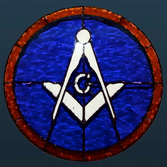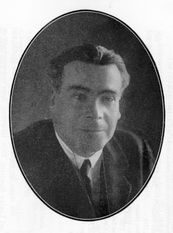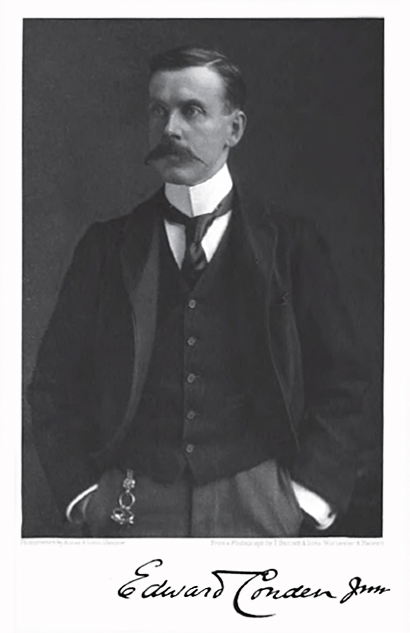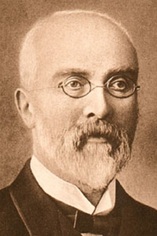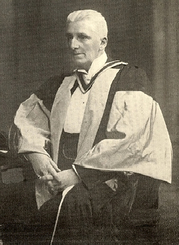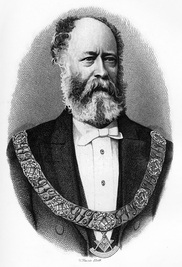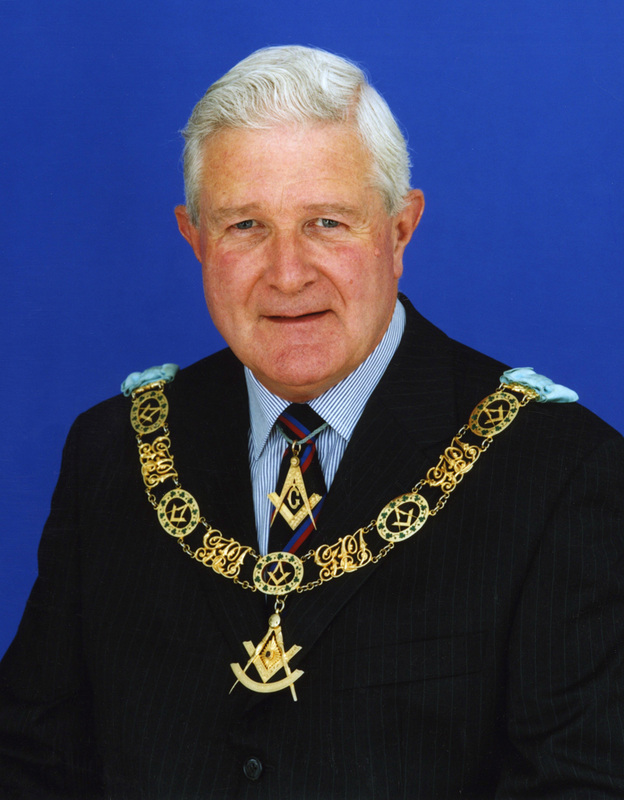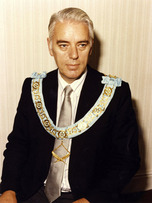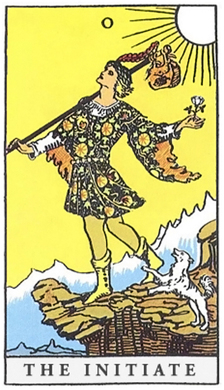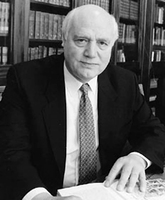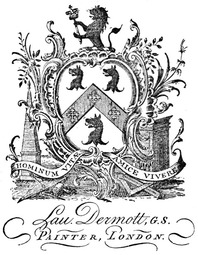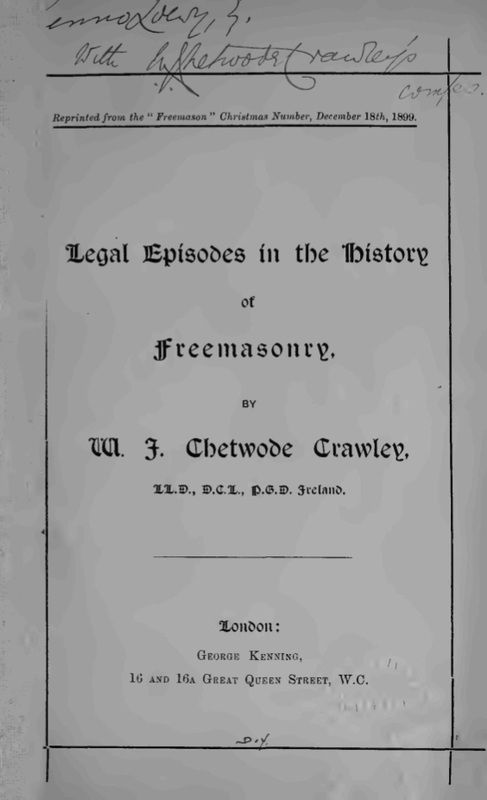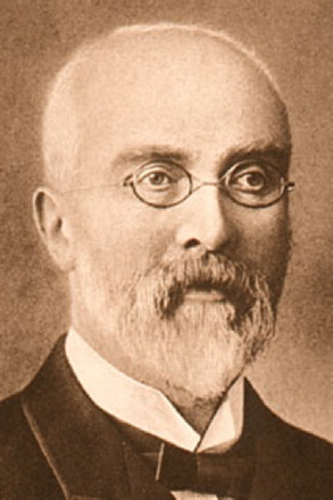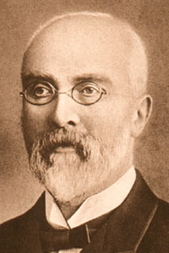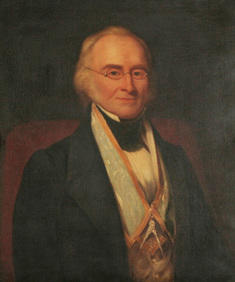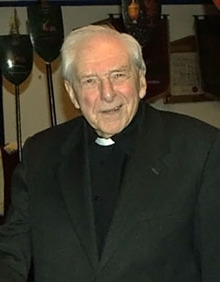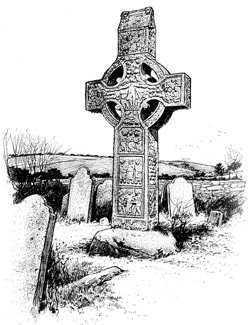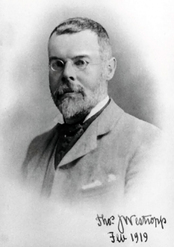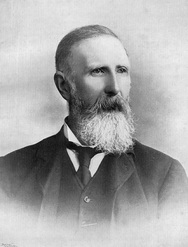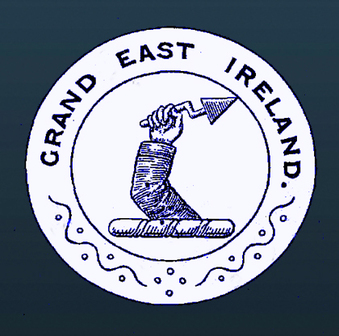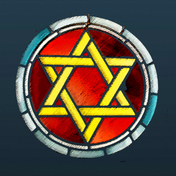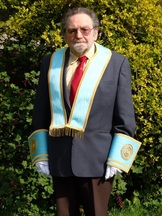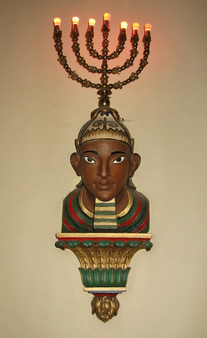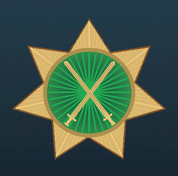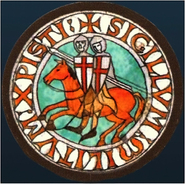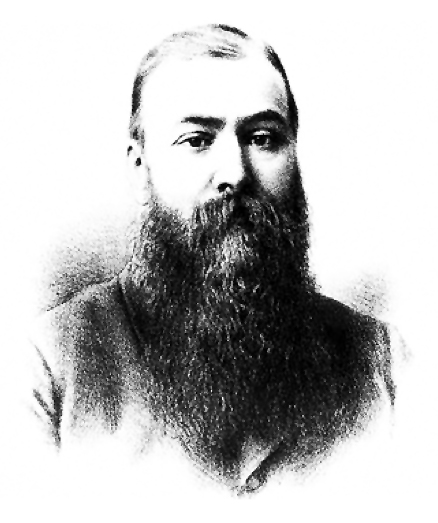Masonic Literature
This category contains various books, papers and articles which, on the whole, are with reference to Irish Freemasonry. The list of books, papers and articles are set out hereunder and to access any particular book, paper or article just "click" on the title of the book, paper or article in question.
The books, papers and articles appear both as pages of the Website and in a .pdf format. As some of the files are quite large they may take some time to download depending on the speed of your broadband.
You will note that for ease of reference each branch of the Order has its own section.
I am in the process of transferring all "Papers" etc from the old website to this website. I shall keep you informed of my progress in the "What's New" category.
If any Brother has any paper or work, particularly in regard to Irish freemasonry, please email them to me and if relevant they will be published below.
Papers and Books of Irish Masonic Interest.
.
General Papers and Books
|
“The Hon. Miss St. Leger and Freemasonry” by Bro. Edward Conder (Ars Quatuor Coronatorum Volume VIII ~ 1895) This Paper should really be read in conjunction with the following Paper by Bro. W.J. Chetwode Crawley. It was through the research of Bro. Crawley that the marriage certificate of Miss St. Leger was located. This marriage certificate can be described as the last piece of the jigsaw, as it accepted that Miss St. Leger was initiated prior to her marriage, putting her initiation sometime between 1710 and 1712. |
“The Story of Lost Archives of The Grand Lodge of Ireland” (Excerpt From Caementaria Hibernica) by W.Bro. W.J. Chetwode Crawley, LL.D., D.C.L.
I was very happy to come across this paper as it was originally sent "From W.J. Chetwode Crawley" and the writing on the top of the title page is that of W.J. Chetwode Crawley. It is one of my most prized masonic possessions.
|
"The Marencourt Cup and Ancient Square, preserved by Union Lodge 13, Limerick" by Bro. Henry F. Berry (subsequently Twiss), First Worshipful Master of The Lodge of The Research No. CC, Ireland (Ars Quatuor Coronatorum Volume XVIII ~ 1905). The author, Bro. Henry F. Berry, recounts the incident involving the French Privateer and Freemason, Captain Louis Marencourt and James Campbell, Master of the sloop "three Friends", a Master Mason and member of Lodge No. 13. Bro. Berry describes the return of the sloop by Captain Marencourt to fellow Freemason James Campbell, as a "tale, romantic and unparalleled as it is, affords a striking tribute to the disinterestedness and self-sacrifice cultivated by the spirit and genius of Masonry". This is a very interesting paper and the Marencourt Cup can still be seen in the Museum at the Masonic Centre, Castle Street, King's Island, Limerick.
|
The Origin of Freemasonry by Robert Longfield, Q.C., (A Lecture delivered on the 5th January, 1857 and published by Victoria Lodge No. IV)
The Ethics of Freemasonry by the Rev. S.G. Morrison, (A Lecture delivered on the 5th January, 1857 and published by Victoria Lodge No. IV)
The Ethics of Freemasonry by the Rev. S.G. Morrison, (A Lecture delivered on the 5th January, 1857 and published by Victoria Lodge No. IV)
|
.
|
What is Freemasonry? - An Answer for the Profane, by W.Bro. W. J. O'Brien.
On Wednesday, 29th October, 1980, a Musical Evening was presented in the Grand Lodge Room, Molesworth Street, Dublin. The programme was provided by the Band of the Garda Siochana, and the proceeds of the Concert were divided between the Irish Wheelchair Association and the Garda Benevolent Society.
The event was promoted by the Grand Master's Lodge, and for the occasion the Paper 'What is Freemasonry?' was written by Bro. W. J. O'Brien. It is an answer for the profane.
The original paper was reproduced by kind permission of Grand Master's Lodge in the Lodge of Research Supplementary Volume A, Pages 1-5, 1985.
The webpage containing the above paper can be accessed through the following link ~ "What is Freemasonry? - An Answer for the Profane, by W.Bro. W.J. O'Brien" and a .pdf copy of the text of the above paper can be accessed by the following link "What is Freemasonry? - An Answer for the Profane, by W.Bro. W.J. O'Brien".
On Wednesday, 29th October, 1980, a Musical Evening was presented in the Grand Lodge Room, Molesworth Street, Dublin. The programme was provided by the Band of the Garda Siochana, and the proceeds of the Concert were divided between the Irish Wheelchair Association and the Garda Benevolent Society.
The event was promoted by the Grand Master's Lodge, and for the occasion the Paper 'What is Freemasonry?' was written by Bro. W. J. O'Brien. It is an answer for the profane.
The original paper was reproduced by kind permission of Grand Master's Lodge in the Lodge of Research Supplementary Volume A, Pages 1-5, 1985.
The webpage containing the above paper can be accessed through the following link ~ "What is Freemasonry? - An Answer for the Profane, by W.Bro. W.J. O'Brien" and a .pdf copy of the text of the above paper can be accessed by the following link "What is Freemasonry? - An Answer for the Profane, by W.Bro. W.J. O'Brien".
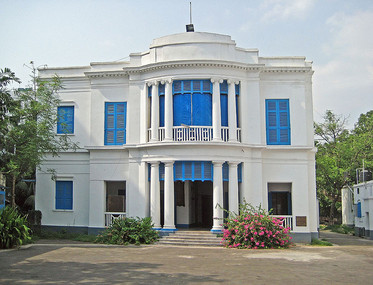
Freemasons' Hall, Park Street, Calcutta.
|
"260 years of Irish Freemasonry in India, 1754-2014" and is by V. W. Bro. Aniruddha Pradhan, who is the P. Prov. Gr. Chap., Prov. Asst. G. Secretary, PM and Secretary, Lodge St. Patrick No. 319 I.C. This Paper was presented during the Annual Installation of Lodge St. Patrick no. 319 I.C., Mumbai, 19th June 2014. |
Irish Masonic Jewels
"The Sackville Medal: The Earl of Middlesex and Irish Freemasonry, 1733. Notes on Irish Freemasonry [No. V]" by Bro. W.J. Chetwode Crawley, LL.D., D.C.L. (Ars Quatuor Coronatorun Volume XIII ~ 1900)
|
"The Wesleys and Irish Freemasonry Notes on Irish Freemasonry [No. VI]" by Bro. W.J. Chetwode Crawley, LL.D., (Ars Quatuor Coronatorum, Volume XV ~ 1902, pages 100-124). This paper, apart from detailing Masonic career of the Duke of Wellington and his family, goes to great lengths to disprove that the famous Rev. John Wesley (a distant relative) was a Freemason. The Wesleys apparently changed the spelling of their surname to "Wellesley" because of this distant relationship.
|
|
"R.W.Bro. John Fowler, Deputy Grand Secretary, 1769 - 25th January, 1856". This paper is by W. Bro. W. J. Fowler, P.J.G.D., published in the Lodge of Research Transactions for the Years 1989 - 1990, Volume XXI, pages 15-18. Whereas most Irish Freemasons would not have heard of Bro. Fowler today, he is the man who can be said to be responsible for the structure of Irish Freemasonry in place today, in terms of the different branches and Degrees. More particularly, however, he is responsible for the Ritual as practised in all Craft Lodges to the present day. His importance to Irish Freemasonry cannot be underestimated.
|
|
"The Contribution of Irish Freemasons to English Freemasonry" by V.W.Bro. the Rev. Neville Berker Cryer M.A., P.M. Quatuor Cororati Lodge No 2076 E.C., reproduced from the Lodge of Research Transactions for the years 1987-1988, Volume XX, pages 39-52. I have added several pictures which did not appear with the Paper, which I think will of interest to the reader. This paper highlights and acknowledges the contribution of Irish Freemasons to Englisg Freemasons. I will be publishing in due course a paper by Irish Masonic History on a more recent Irish Freemason who achieved the highest rank possible for a Freemason in the English Constitution - any ideas?
|
|
"Freemasonry and the Mediaeval Guilds" by R.W.Bro. Major-General Sir George McK. Franks, K.C.B., Senior Grand Warden, reproduced from the Lodge of Research Transactions for the years 1939-1946, published 1948, pages 101-110, to the 'Masonic Literature" section. I have added several pictures which did not appear with the Paper, which I think will of interest to the reader. I find this paper very interesting as it discusses the origins of Freemasonry and mentions the Baal's Bridge Square of 1507, discovered in Limerick in 1830, an article on which you will find in the "History of Freemasonry" section.
|
Provincial and Lodge Histories
|
“Notes on Freemasonry in Cork City” by W.Bro. Thomas Johnson Westropp, Past Master, Lodge No. 143, Dublin (Ars Quatuor Coronatorum Volume XXI ~ 1908). The author, W.Bro. Thomas Johnson Westropp, was an Irish antiquarian, folklorist and archaeologist whose family had a long association with Munster, hence the paper on Cork Freemasonry. |
"Early Freemasonry in Tandragee" by W.Bro. J.A. McClelland
(This is a very interesting Paper on early Freemasonry in Tandragee by W.Bro. J.A. McClelland, a member of the Lodge of Research, which as you will see is based upon notes written by his late father, V.W.Bro. Samuel McClelland, who was Secretary of Union Lodge No. 105 for some 39 years!)
(This is a very interesting Paper on early Freemasonry in Tandragee by W.Bro. J.A. McClelland, a member of the Lodge of Research, which as you will see is based upon notes written by his late father, V.W.Bro. Samuel McClelland, who was Secretary of Union Lodge No. 105 for some 39 years!)
|
“The Grand East of Ulster” by Bro. Francis C. Crossle. This paper was published in “The Freemason”, on the 21st December, 1892, pages 11-15. The paper is about the schism that took place between mainly northern Lodges and Grand Lodge between 1806 and 1813.
Whereas it could be said the initial cause of the dispute was the attempt by Grand Lodge, around that time, to bring under separate control each of the higher Degrees, which Degrees by tradition, up to that time, had been granted under the authority of the “Blue” Craft Warrant. |
However it was the dismissal of Alexander Seton that brought long-standing issues to a head. I think it is fair to say that through ignorance, 19th Century communications and certain Brethren wishing to take advantage of the situation that arose, that the schism came about (you must remember that there was no Irish Masonic Network at the time!).
As you will see Seton was proved to be a quite an untrustworthy character whose only aim was to enrich himself by the illegal issue of cancelled Warrants and so on.
The schism came to an end in 1813, with the Northern Lodges returning to the fold, which time coincided with the conclusion of the High Court action against Seton. The Junior Counsel instructed by Grand Lodge was our erstwhile Brother Daniel O’Connell, Past Master Lodge No. 189. The paper may be accessed through the following link - “The Grand East of Ulster”
Bro. Francis C. Crossle, is probably one of the greatest Irish Masonic historians and collectors of items of early Masonic interest, and one of my most cherished Masonic possessions is the Jewel presented to him by St. Patrick’s Lodge No. 77, Newry, the Premier Lodge of Ulster, in 1898 – this jewel and several papers on Bro. Crossle - can be accessed through the following Link - Bro. Francis C. Crossle.
As you will see Seton was proved to be a quite an untrustworthy character whose only aim was to enrich himself by the illegal issue of cancelled Warrants and so on.
The schism came to an end in 1813, with the Northern Lodges returning to the fold, which time coincided with the conclusion of the High Court action against Seton. The Junior Counsel instructed by Grand Lodge was our erstwhile Brother Daniel O’Connell, Past Master Lodge No. 189. The paper may be accessed through the following link - “The Grand East of Ulster”
Bro. Francis C. Crossle, is probably one of the greatest Irish Masonic historians and collectors of items of early Masonic interest, and one of my most cherished Masonic possessions is the Jewel presented to him by St. Patrick’s Lodge No. 77, Newry, the Premier Lodge of Ulster, in 1898 – this jewel and several papers on Bro. Crossle - can be accessed through the following Link - Bro. Francis C. Crossle.
.
"Royal Arch Masonry in Ireland" - A Short History.
"Royal Arch Masonry in Ireland in the Early 19th Century" by W.Bro. Robert J. W. Harvey.
"The Royal Arch Jewels" by Most Excellent Companion W.J. O’Brien.
|
"The Grand Royal Arch Room, Dublin" by R.E.Comp. W.J. O'Brien, G.D.C., P.G.H.P. (Hon.), published in the Chapter of Research Transactions No. 222, for the Years 1978-1985, Volume I, pages 167-186. This paper gives anyone who has never visited Molesworth Street a great introduction to the room, and you will see that the objective of its author, Comp. O'Brien is "to shed some light on the symbolism, Masonic and otherwise, relating to the design, decor and furnishings of this interior as it is with all its inconsistencies as a Grand Royal Arch Room, ever bearing in mind that its purely Egyptian styling will claim an inordinate part of the explanatory information". The paper coupled with the pictures added by Irish masonic History give a fascinating insight into this spectacular room.
|
Grand Council of Knight Masons "1923 - 1998 Notable Events"
This Booklet was published to celebrate the 75th Anniversary of the constitution of the Grand Council of Knight Masons. The research and preparation for the Booklet was carried out by R.E. Sir Kt. Michael J. Ward, assisted by R.E. Sir Kt. Bernard V.A. Woods (the current M.E. Great Chief).
.
|
“A History of the Origin and Progress of Chivalric Freemasonry in the British Isles, particularly in Ireland” A work by Sir Charles A. Cameron, C.B., Deputy Grand Master of the Order of Knights Templar, and Knights of Malta, in Ireland, published in the “Statutes, Laws and Regulations” of the Great Priory of Ireland on the 1st March, 1901. |
"The Story of Lodge "Glittering Star" No. 322 (Irish) (1759 - 1966) and The Beginning of Knight Templary in Canada" by Reginald V. Harris, P.S.G.M. (Can.) (The Papers of The Canadian Masonic Research Association, 1949-1976, Volume III). A Paper from 1966 which relates that the 29th Regiment was stationed in Halifax, Nova Scotia, prior to being posted to Boston where members of Lodge No. 322 (subsequently named "Glittering Star") conferred the Knights Templar Degree, resulting in the first recorded minute of the said Degree. Bro. Harris surmises that as they had been stationed in Halifax for some time prior to this posting they must have conferred the Degree in Halifax, hence the title of the Paper "The Beginning of Knight Templary in Canada".


